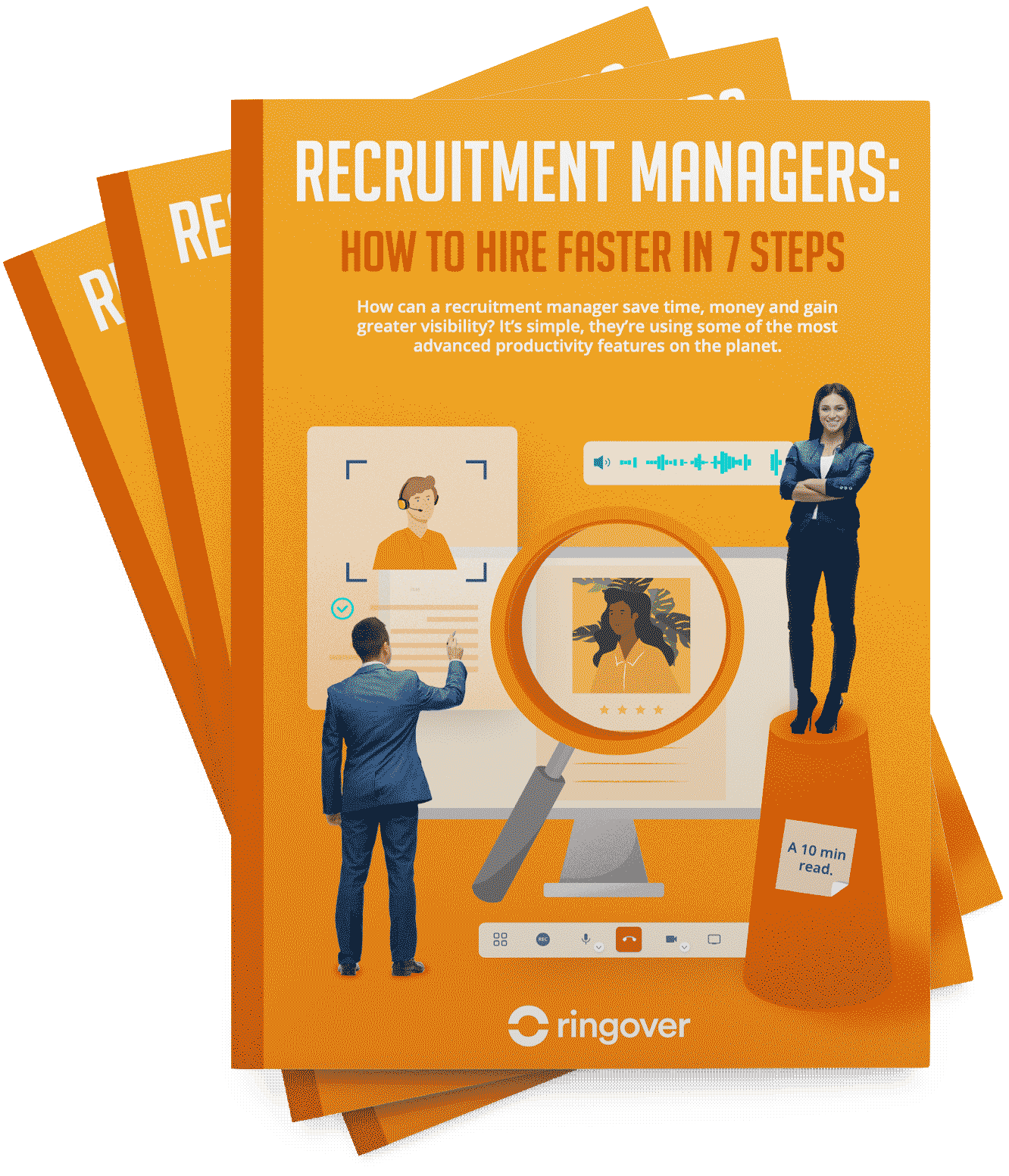Summary
Welcoming a new team member is a pivotal moment to ensure their effective integration into your organisation. Indeed, a well-designed recruiting onboarding process plays a crucial role in employee retention, strengthening your employer brand, and enhancing team productivity. But what are the components of a successful recruiting onboarding process?
How can you implement an integration strategy that meets the expectations of new hires while equipping them for success? What tools can you use to develop an integration journey that is both personalised and aligned with your company culture?
This article offers you a comprehensive checklist for HR onboarding, aiming to facilitate the welcome and support of your new employees. You will discover how HR onboarding goes beyond mere administrative formality to become a true integration experience, fostering the sharing of your company vision and stimulating the engagement of new team members.
What is recruiting onboarding?
Onboarding, also known as employee onboarding, is a crucial process for integrating new employees into a company. Its purpose is to provide them with the knowledge, skills, and behaviours necessary to effectively fulfil their role while harmoniously integrating into the culture and values of the organisation.
Contrary to popular belief, onboarding is not limited to a set of administrative procedures such as filling out documents, signing contracts, or touring the premises. It is also a key moment for building relationships, during which it is essential to establish connections with the team, share the company's vision and mission, and encourage the engagement and motivation of new hires.
This process begins with the acceptance of the job offer and continues until the new employee feels fully integrated and comfortable in their position. Depending on the complexity of the role and the newcomer's experience, onboarding can last for several weeks or months.
Essential for the success and retention of talent within the company, a good onboarding program helps reduce turnover rates, increase productivity and efficiency, improve the employer brand image, and establish a positive work environment.
Why is recruiting onboarding important?
HR integration plays a crucial role for both the employee and the organisation. Here are some key advantages of an effective onboarding process:
Reduced turnover ✅
Employees who feel welcomed, supported, and valued from the start are less likely to leave the company. A study shows that 69% of employees are more likely to stay with their company when they have an excellent onboarding experience.
Increased productivity ✅
An employee who understands their role, tasks, goals, and colleagues works more effectively and efficiently. They are also better able to adapt to changes and unforeseen situations. A study reveals that companies with a structured onboarding program have 54% higher productivity than those without a defined program.
Enhanced employer brand ✅
Having an excellent integration experience makes employees more satisfied and engaged, turning them into ambassadors for the company within their network and on online platforms. This helps attract and retain top talent.
Creating a positive work environment ✅
Feeling integrated and supported fosters an employee's confidence in themselves and their team. This encourages the development of quality relationships based on collaboration, communication, and respect, contributing to a pleasant and motivating work atmosphere.
As illustrated, HR onboarding is a vital strategic tool for the success of your company. It should not be seen as a mere formality but rather as a personalised journey that meets the specific needs of each new team member.

What are the challenges in onboarding?
HR onboarding is much more than just a welcome formality. It is a crucial strategic process for both the company and the new employee. Let's explore together the key challenges to consider:
Reducing recruitment costs
Recruiting a new team member represents a significant investment. A premature departure of the employee results in the loss of this investment. Thus, an effective HR onboarding process helps limit turnover, ensuring employee loyalty from the start through a positive welcome experience.
Optimising time
With quality HR onboarding, the new employee becomes operational and autonomous more quickly. They will need less help from colleagues or supervisors for practical or technical questions, facilitating their integration into the team and the company culture. This results in significant time and efficiency gains.
Strengthening the employer brand
A positive onboarding experience makes the employee more satisfied and engaged. They can then become a true ambassador for your company, sharing their positive impressions via social networks, review platforms, or word of mouth, which helps attract and retain talent.
Improving communication
Quality onboarding ensures that the newcomer is well informed and supported. They will know the relevant people, procedures, and tools at their disposal, facilitating communication with HR and other departments and reducing the risk of misunderstandings or conflicts.
The importance of HR onboarding in the success of your company is undeniable. It is a strategic investment aimed at welcoming each new team member in a personalised and tailored manner to their needs, far from being a mere administrative formality.
Onboarding checklist: the ideal integration process to follow
To ensure the success of HR onboarding for your new employees, it is crucial to follow a well-defined and structured integration process. Discover our onboarding checklist that will guide you to ensure that nothing is left to chance:
1. Anticipate the welcome of the new team member with the management team.
Before their first day, organise their welcome by sending them a welcome email, informing them about practical information such as schedules, dress code, and directions. Also, provide them with the necessary equipment (computer, phone, etc.), create an email address and an account on internal tools, and prepare a personalised welcome kit. Inform the team about their arrival by sharing their name, role, and tasks, and encourage them to give them a warm welcome.
2. The first day is crucial for the success of the onboarding process.
Welcome the new employee with enthusiasm, introduce them to their manager and colleagues, give them a tour of the premises, give them their badge, employment contract, and necessary administrative documents.
Clarify security and confidentiality rules, have them sign the IT charter and data protection policy. Also, introduce them to their workspace, equipment, tools, and access codes, ensuring they have everything they need to be operational.

3. Organise regular meetings during their first few weeks.
Provide attentive follow-up by scheduling weekly meetings with their manager, individual interviews with HR, and provide constructive feedback on their work.
Offer them training on the company's products, services, processes, and methods, conduct evaluations to validate their acquired skills. Also, facilitate meetings with other departments of the company, explaining their roles, missions, and interactions.
4. Assign a mentor to the new employee.
To simplify their integration, designate an experienced and willing mentor from their team, responsible for accompanying and advising them, answering their questions, sharing best practices and their experience. The mentor will become a point of reference and trust for the new employee, promoting their comfort and feeling of support.
This onboarding checklist is by no means exhaustive, but it provides a solid foundation for a successful integration process. Feel free to adjust it according to the size of your company, its culture, needs, and the specifics of the position to be filled.
The main goal is to offer a positive and personalised experience to new recruits, motivating them to commit and stay within your organisation.
What tools can facilitate onboarding?
Establishing an effective HR onboarding process can greatly benefit from the use of digital tools and software integrations. These tools help simplify, personalise, and automate the various stages of new employee onboarding. Here are some recommended tools:
- HR SaaS software: These solutions centralise and manage employee information (employment contracts, administrative records, pay slips, schedules, training, etc.). They facilitate communication with new hires through notifications, reminders, and surveys. Software like Factorial, Lucca, Eurecia, or Nibelis are popular options.
- Onboarding platforms: These platforms allow you to design custom integration paths tailored to the needs and profiles of recruits. Through interactive content, quizzes, videos, and games, new hires can immerse themselves in the company's culture, values, and offerings. Assigning mentors or sponsors also facilitates their support. Heyteam is an example that integrates easily with other HR tools.

These digital tools do not replace human interaction but complement it, enriching the onboarding experience. They contribute to creating a unique and memorable experience for new recruits, making them more engaged, motivated, and loyal to the company. The goal is to create a reliable and smooth tool ecosystem for everyone. Therefore, we recommend opting for integrations rather than stacking solutions. It is important that your HR software can seamlessly integrate with your existing tools, such as your softphone or your email solution.
Conclusion
The onboarding process brings multiple benefits, both for the employee and the employer, including reduced turnover, increased productivity, strengthening the company's image as an employer of choice, and establishing a positive work environment. To be effective, it must follow a precise checklist from the new employee's welcome to their full development.
The adoption of digital tools proves to be a major asset, as they facilitate, automate, and personalise integration steps.
As you can see, HR recruiting should not be seen as a simple administrative procedure but as a tailor-made journey, essential to the success of the company and adapted to each of its new members.
To improve your performance, from initial phone interviews to onboarding, do not hesitate to use our services. To learn more about how Ringover can assist you, start your free trial.
Published on April 19, 2024.


